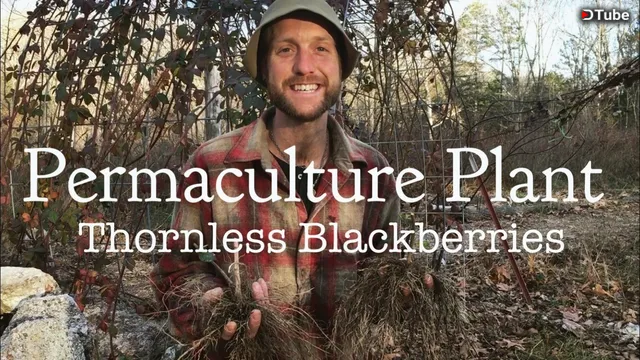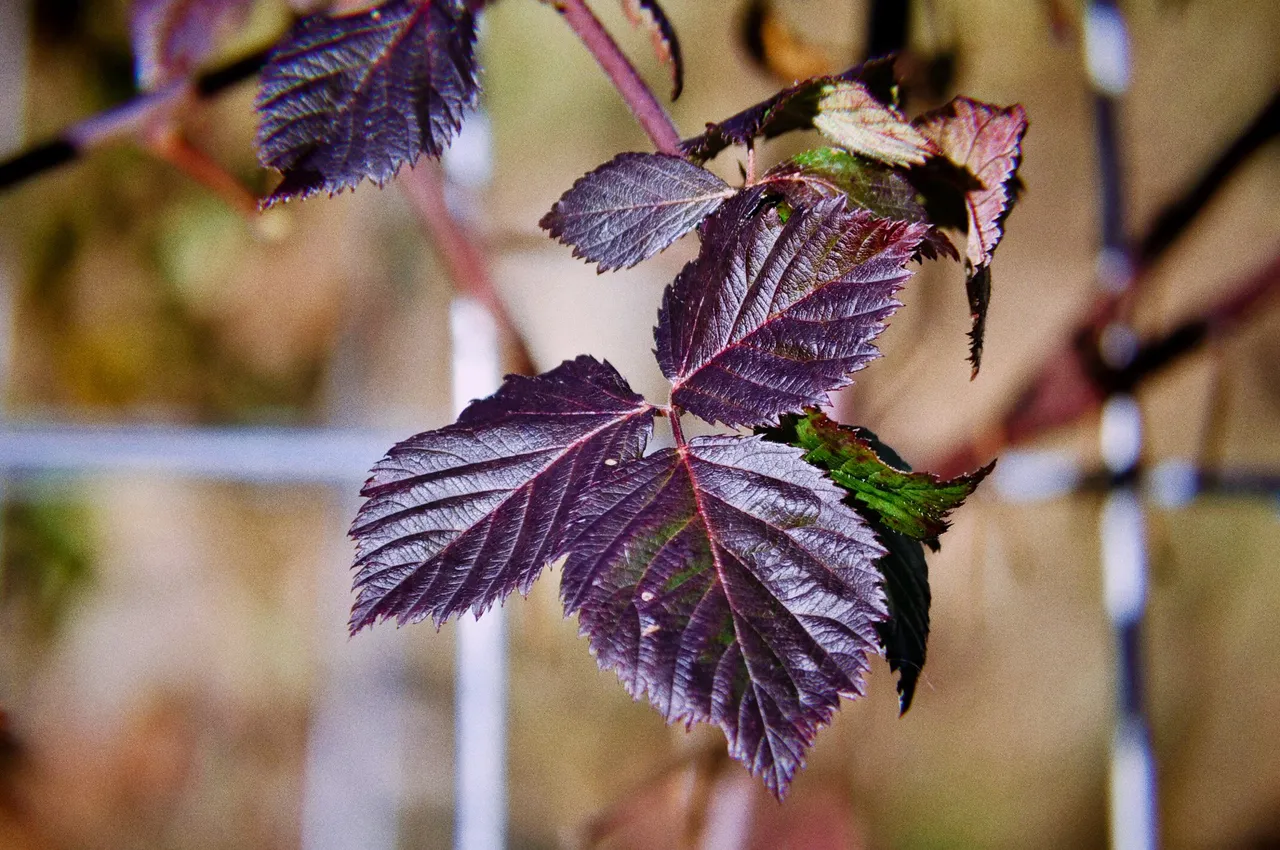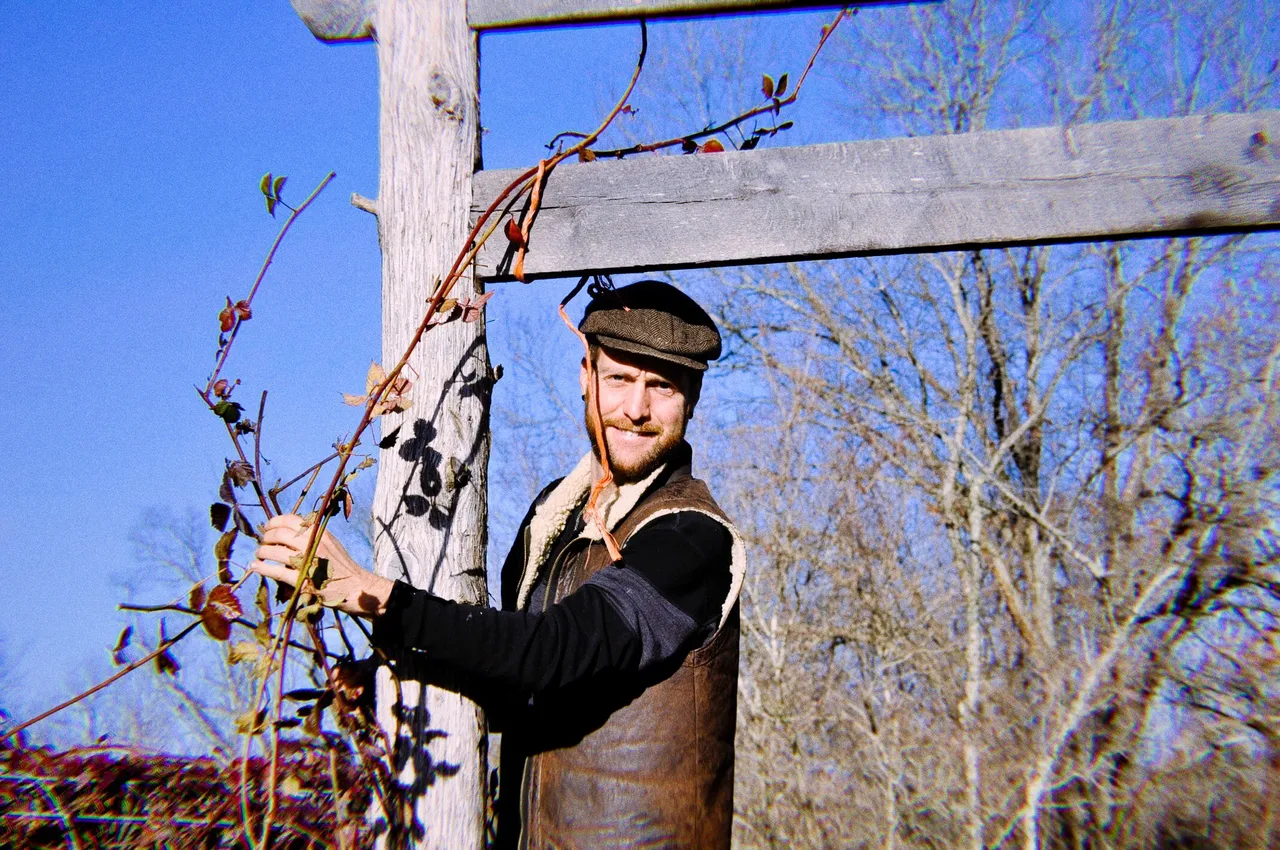

If there’s one fruit we’d recommend to start growing it’s thornless blackberries.
They are not finicky like many other fruits and suffer from few pests and diseases. They are quick to yield (during second season) and offer years of care-free fruit production.
Blackberries are esteemed for their sweet and sour taste and high concentration of antioxidants, made apparent by their rich color.
Thornless blackberries have been bred over the years by hybridizing various members of the rubus genus to obtain higher yields, more vigorous growth, sweeter berries and non-thorny habits.
Their low maintenance, drought tolerance, nutrient density and low glycemic nature make blackberries an ideal food for anyone interested in home food production.
Thornless blackberries are a resilient and vigorous plant that simply loves to grow!
The main thing to consider is trellising as they can grow more than 12 ft in a season!
We grow ours on a 4 string systems using fencing wire on 6 foot T posts, but we also have gotten creative with cattle panels. This is the biggest investment with growing thornless blackberries and is well worth the effort to ensure healthy growth and easy harvesting.

We want YOU to start growing some thornless blackberries and are now offering them for sale.
We are selling through
- Our website ozarkmountainjewel.com
- @thehomesteaderscoop
- Ebay
We have over 150 plants we propagated this season and want them all to go to a good home.
We are offering Chester and Triple Crown varieties. Here’s a bit about them:
Chester:
Said to be the most productive thornless blackberries. It is the most commonly grown variety in the Midwest. Ripens in July and is self-pollinating.
Triple Crown:
Great tasting berry sweet berry with a slight tartness. Fruits are borne uniformly and are easy to pick. Ripens in August and is self-pollinating.
The plants you will receive are shipped bare root and are ready to plant in early spring or summer or anytime in zone 8 and above.
Plants shipped in winter will stay dormant until weather warms up.
Spacing
We space ours at 5’ within the row to allow for their sprawling growth habits. I prep the soil thoroughly before planting. I use a shovel to remove rocks, perennial weeds and incorporate some organic matter like compost, leaves or a cover crop.
Ammending
If your site needs it, here’s where you could add minerals such as lime, rock phosphate, greensand or other amendments. As we have a lot of wild brambles growing on our land, and generally low fertility so we opted only for the addition of some composted chicken manure.
Basics
To plant simply spread the root mass in a hole just large enough to accommodate root mass and cover. The cane stub can be partially buried and will send out roots if buried.

After planting you can choose to add a generous quantity of cardboard and mulch around the plant to retain moisture, suppress weeds and support soil microbes. I’m a fan of heavy mulching and would advise it. Once planted, water in until ground is saturated to ensure good root to soil contact.
Fertilize your new plants lightly in the spring to encourage vigorous growth. There are many ways to maintain fertility, so pick one that works best for you. We use a mixture of annual manuring and pathways planted in clover.
Berries will yield well for years if weeds are kept out, proper spacing is maintained and enough water is provided.
There is a small amount of annual pruning requires to thin vigorous growth and remove canes that have already fruited. While the plants are drought tolerant, they will yield more if given water, especially during fruit development.
We’re excited to be offering this to ya’ll and hope to empower many others to grow their own food!
And if you mention you heard about this through our blog, we'll send ya 4 instead of 3!! :) Steemy discount!
▶️ DTube
▶️ IPFS